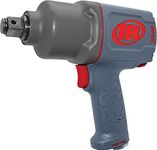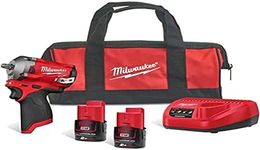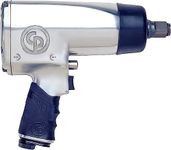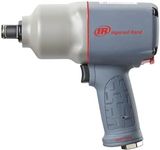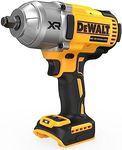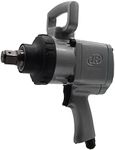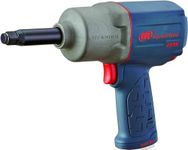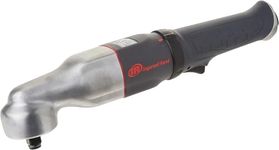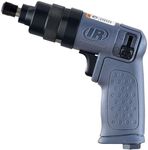Buying Guide for the Best Air Impact Wrenches
Choosing the right air impact wrench can make a significant difference in your work efficiency and ease. These tools are essential for tasks that require high torque output, such as automotive repairs, heavy equipment maintenance, and construction projects. To select the best air impact wrench for your needs, it's important to understand the key specifications and how they relate to your specific requirements. Here are the main specs to consider and how to navigate them.TorqueTorque is the amount of rotational force the wrench can apply. This is crucial because it determines the tool's ability to loosen or tighten bolts and nuts. Torque is measured in foot-pounds (ft-lbs) or Newton-meters (Nm). For light-duty tasks, such as small automotive repairs, a wrench with 150-300 ft-lbs of torque may suffice. For more demanding jobs, like heavy machinery maintenance, you might need a wrench with 500 ft-lbs or more. Consider the toughest job you expect to handle and choose a wrench with a torque rating that meets or exceeds that requirement.
Drive SizeThe drive size refers to the size of the square drive that holds the socket. Common sizes include 1/4-inch, 3/8-inch, 1/2-inch, 3/4-inch, and 1-inch. Smaller drive sizes (1/4-inch and 3/8-inch) are suitable for lighter tasks and tighter spaces, while larger drive sizes (3/4-inch and 1-inch) are used for heavy-duty applications. A 1/2-inch drive is the most versatile and commonly used size, making it a good choice for general automotive work.
Air ConsumptionAir consumption is the amount of compressed air the wrench uses, measured in cubic feet per minute (CFM). This spec is important because it determines the compatibility with your air compressor. Ensure your compressor can deliver the required CFM at the recommended pressure (usually measured in PSI). For occasional use, a wrench with lower air consumption (around 4-5 CFM) may be adequate. For continuous or heavy-duty use, look for wrenches with higher air consumption (6-8 CFM or more) and ensure your compressor can keep up.
Weight and ErgonomicsThe weight and design of the wrench affect user comfort and fatigue, especially during prolonged use. Lighter wrenches (around 4-5 pounds) are easier to handle and reduce strain, making them ideal for extended tasks. Ergonomic designs with comfortable grips and balanced weight distribution also enhance usability. Consider how long you'll be using the wrench and choose one that feels comfortable and manageable for your needs.
Noise LevelAir impact wrenches can be quite loud, with noise levels measured in decibels (dB). High noise levels can be harmful to your hearing and uncomfortable to work with. Look for wrenches with lower noise ratings (below 90 dB) if you are concerned about noise. Some models come with built-in noise reduction features, which can be beneficial if you work in a noise-sensitive environment or use the tool frequently.
Durability and Build QualityThe durability and build quality of the wrench determine its lifespan and reliability. Look for wrenches made from high-quality materials like steel or aluminum, which offer better durability. Features like a robust housing, quality internal components, and a good warranty can also indicate a well-built tool. If you plan to use the wrench frequently or in demanding conditions, investing in a durable model will save you time and money in the long run.
